

William Stopford
Every SUV, ute and van discontinued in Australia in 2025
6 Hours Ago
Lexus' first stab at a compact premium EV doesn't move the game forward, but will appeal to those looking for some familiarity in EV land.
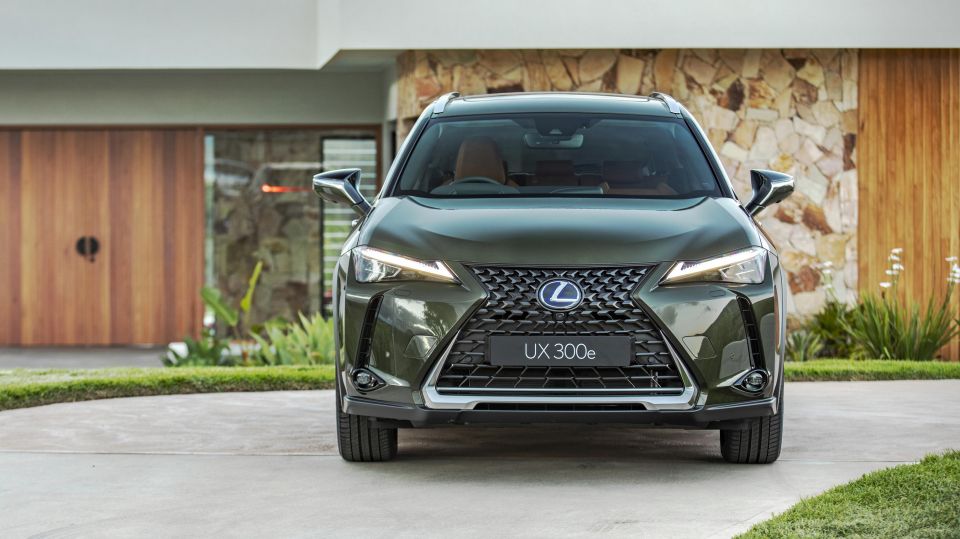
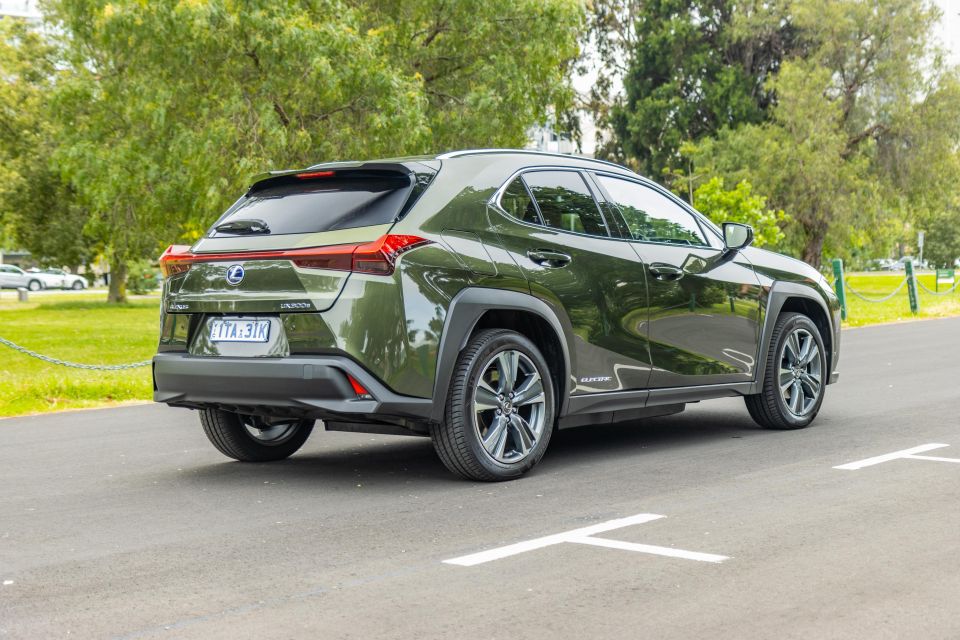

Marketplace Editor
New from
$44,445
excl. on-roads

Marketplace Editor
New from
$44,445
excl. on-roads


Marketplace Editor
New from
$44,445
excl. on-roads

Marketplace Editor
New from
$44,445
excl. on-roads
Quickly see how this car stacks up against its competition. Select any benchmark to see more details.
Where expert car reviews meet expert car buying – CarExpert gives you trusted advice, personalised service and real savings on your next new car.
Lexus and its Toyota parent have long been the poster children of hybridisation, but they’ve never really ventured into the electric car (EV) space.
That’s about to change with the 2022 Lexus UX300e, the luxury brand’s first attempt at a battery-electric vehicle using the distinctly-styled UX crossover as its base.
Squaring up against the likes of the Mercedes-Benz EQA and Volvo XC40 Recharge Pure Electric, both electric versions of combustion-engined models, the UX300e follows a similar formula but does little to distinguish itself from its petrol and hybrid siblings.
In fact, Lexus deliberately made the UX300e look like any other UX based on customer feedback that indicated many luxury buyers prefer consistent designs regardless of power source. The brand is also sticking to its guns in offering a comprehensive ownership program to help early adopters make the switch to zero-emissions motoring.
But with shorter range than most direct rivals, a lack of CCS fast-charging capability, and a very compact cabin, do the usual Lexus brand pillars of quality, craftsmanship, safety and ownership benefits offset the spec shortcomings?

The electric UX starts at $74,000 before on-road costs for the UX300e Luxury, within $4500 of the flagship UX250h AWD F Sport but a whole $30,000 more than the entry-level petrol-powered UX200 Luxury.
On test we have the top-spec UX300e Sports Luxury, which at $81,000 plus on-roads is pricier than the Mercedes-Benz EQA 250 and Volvo XC40 Recharge Pure Electric, among others.
2022 Lexus UX300e pricing:
All prices exclude on-road costs.
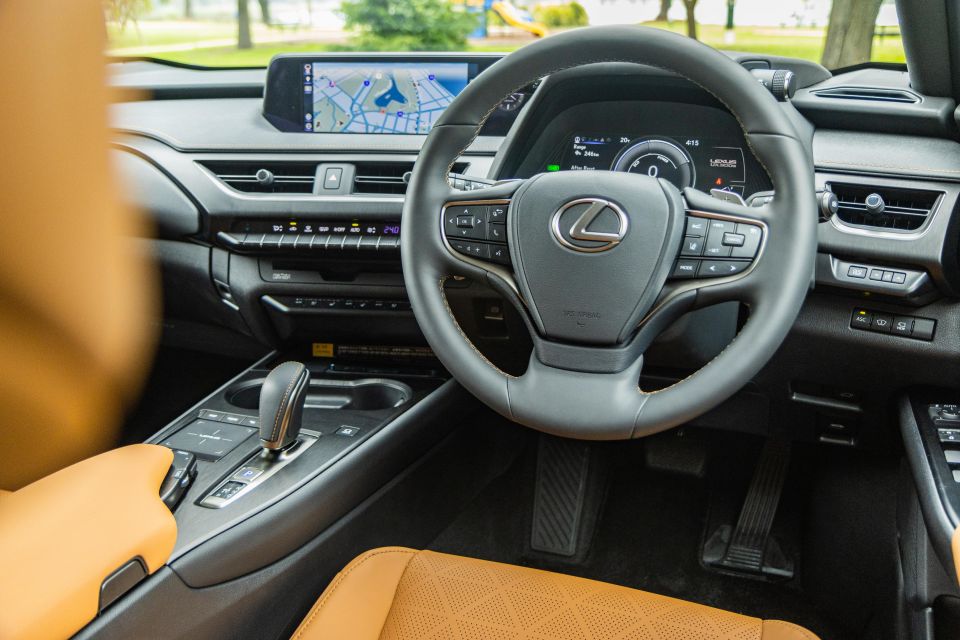
Both grades of electric UX come comprehensively equipped and also offer a very compelling ownership support package, which we’ll get to in a bit.
When breaking down key rivals it’s worth noting the gap between mainstream and luxury brands is much narrower in the EV segments, with many buyers focusing more on performance, range and features.
Keeping that in mind, competitors include:
All prices exclude on-road costs
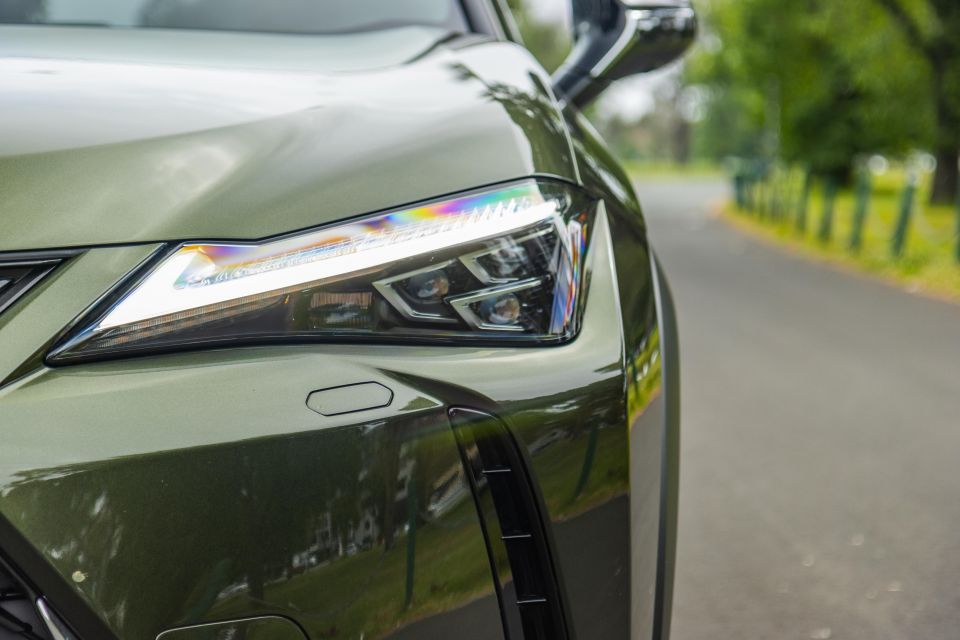
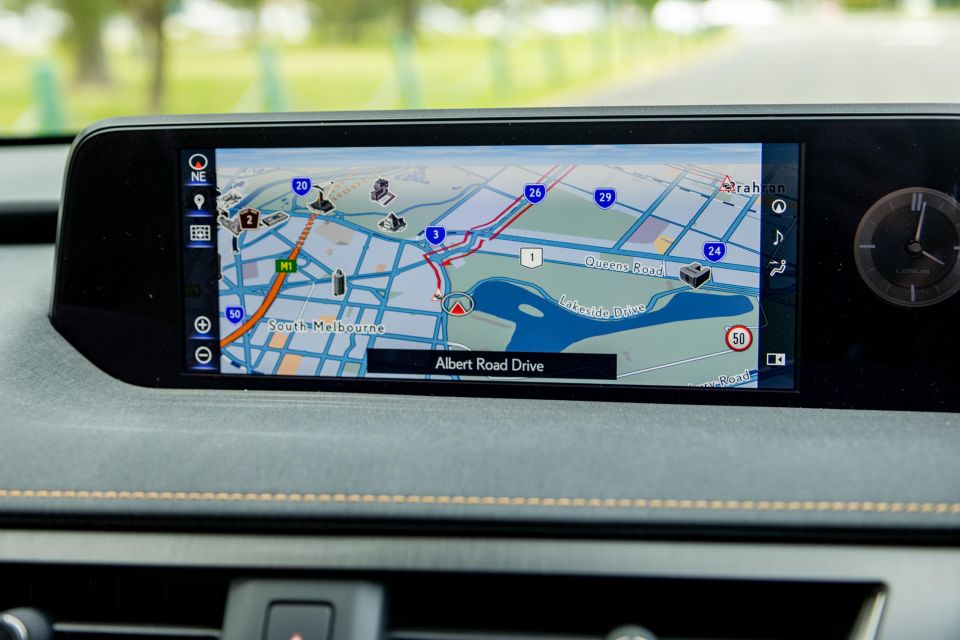
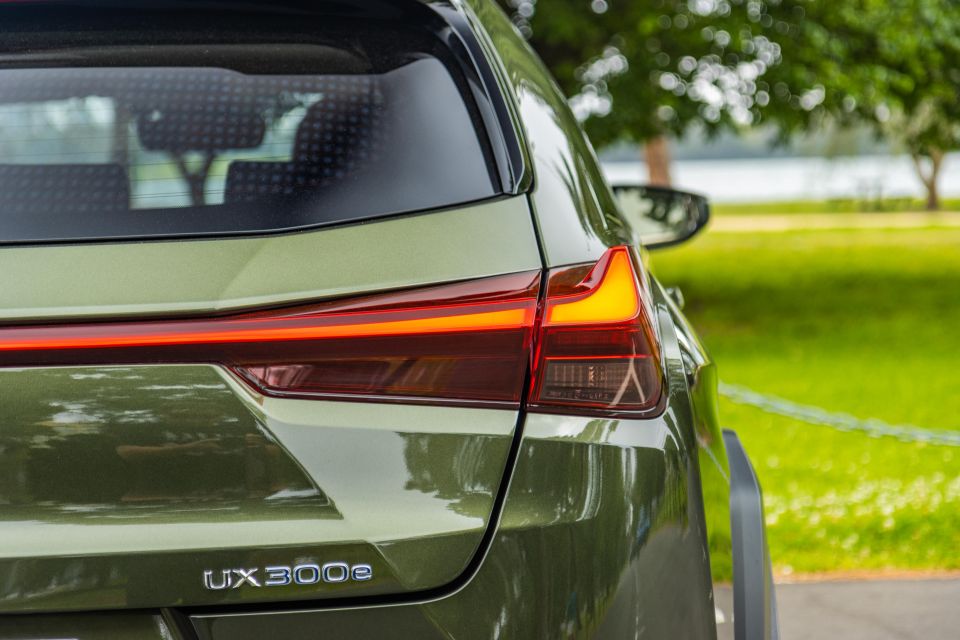

Buy your new car without the stress. It's fast, simple and completely free.

Great service from Travis and team, second time I have used this business would not hesitate to recommend them to anyone
Craig C.
Purchased a Ford Ranger in Sunshine Coast, QLD
CarExpert helped Craig save thousands on his Ford Ranger, now let us save you on your next new car.
Find a dealUX300e Luxury highlights include:
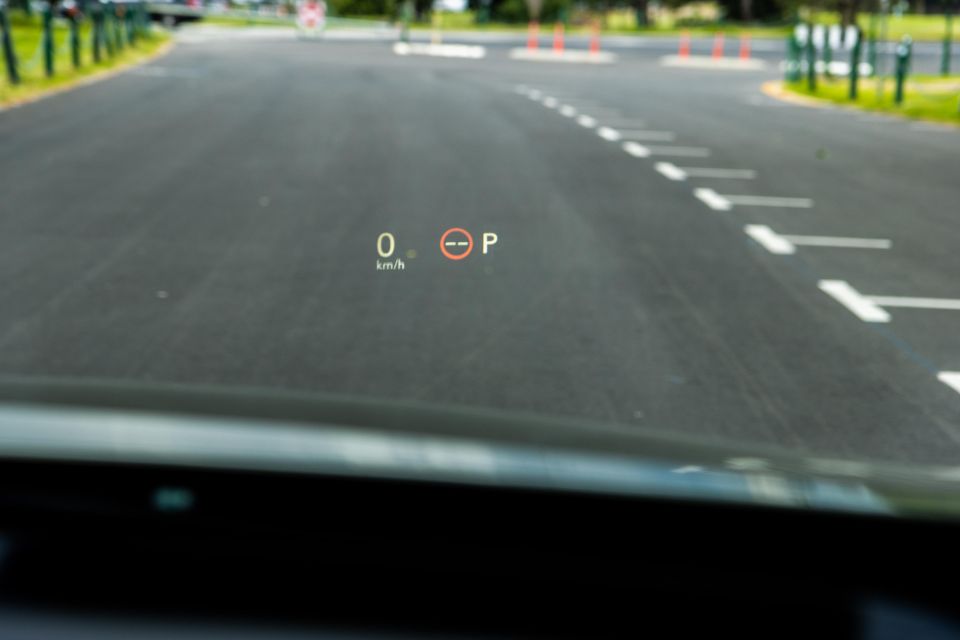
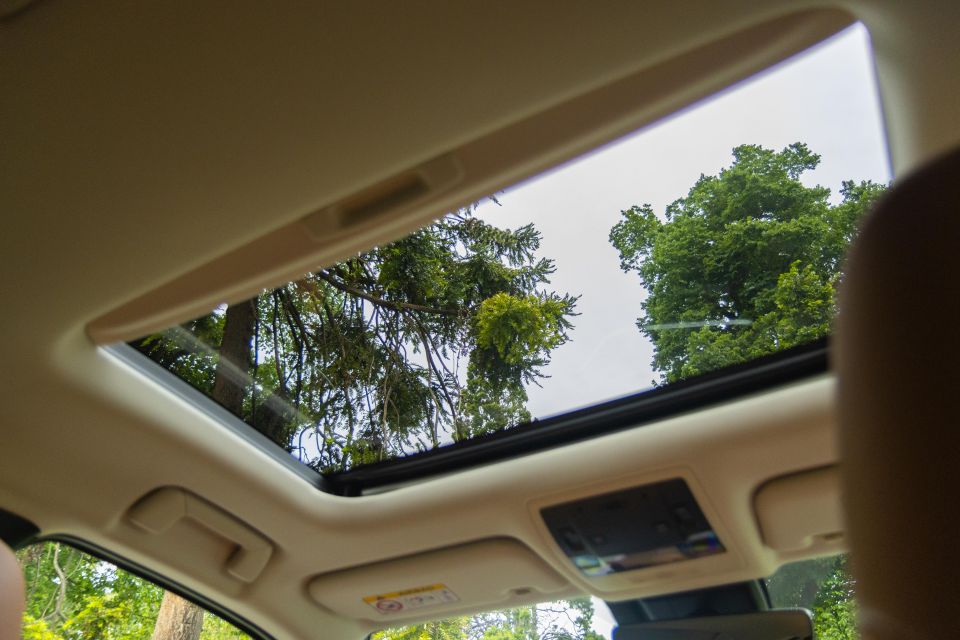
The UX300e Sports Luxury gains:
While the UX300e is offered in familiar Luxury and Sports Luxury grades, it offers more kit over equivalent UX200 petrol and UX250h hybrid models.
The UX300e Luxury, for example, gains ventilated front seats, heated rear seats, and a 13-speaker Mark Levinson sound system, features not available on the petrol and hybrid Luxury variants. It also wears unique aerodynamically-optimised 17-inch alloy wheels.
No options have been detailed for the UX300e, meaning there’s no Enhancement Pack for either grade – both grades offer more than their respective petrol/hybrid counterparts anyway – and premium paint is a no-cost option.

The UX300e doesn’t fall under ANCAP’s five-star safety rating for petrol and hybrid models just yet, but Euro NCAP has applied the five-star rating to the EV version – expect a local announcement soon.
Based on tests conducted by Euro NCAP in 2019, the regular UX managed an impressive 96 per cent for adult occupant protection, 88 per cent for child occupant protection, 82 per cent for vulnerable road user protection and 83 per cent for safety assist features.
Standard safety equipment includes:
The UX300e Sports Luxury adds:
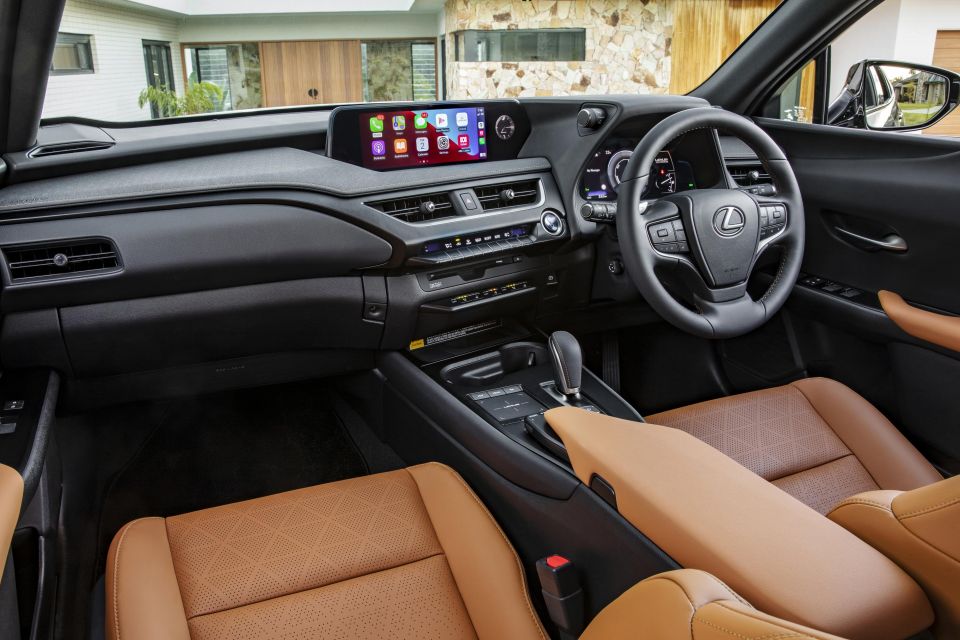
If you’ve ever sat in a UX, there’s no surprises here.
Little differentiates the all-electric version from its petrol and hybrid counterparts, bar the shift-by-wire gear selector and the UX300e badging in the instrument cluster flanking the digital electric power meter – it even retains the CD player!
Build quality feels rock solid, and for the most part there’s a good ratio of soft-touch and leather-line surfaces and interesting details, with lower parts of the cabin wearing harder-wearing plastics. The front seats are super comfortable, with good bolstering and support all round with a wide range of adjustment.
I’ve also driven the Mercedes-Benz EQA and, while it wows you with its dual MBUX displays and has the handsome three-pointed star on the steering wheel, the material quality and ambience doesn’t feel up to the same level.
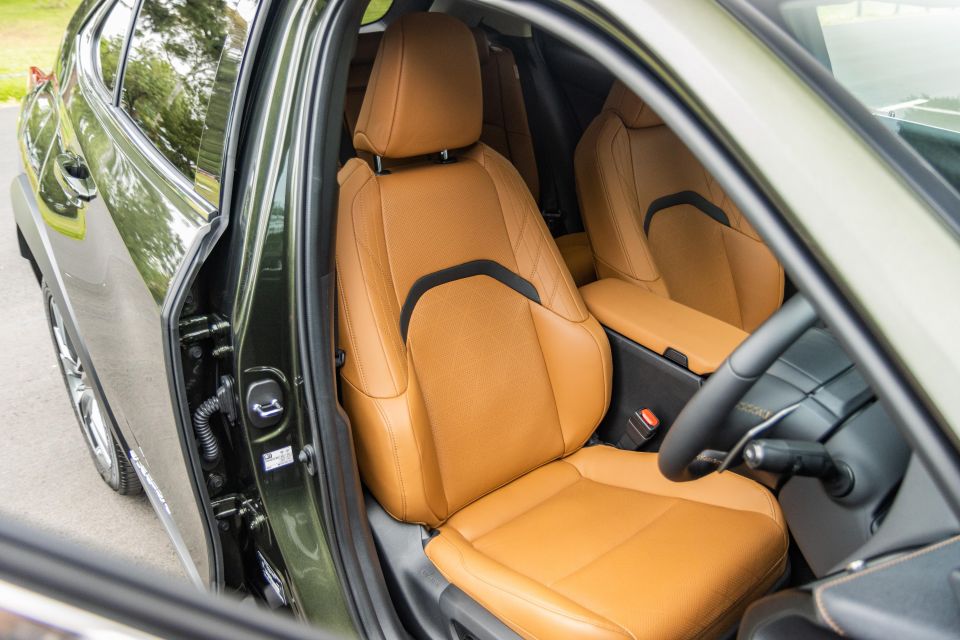
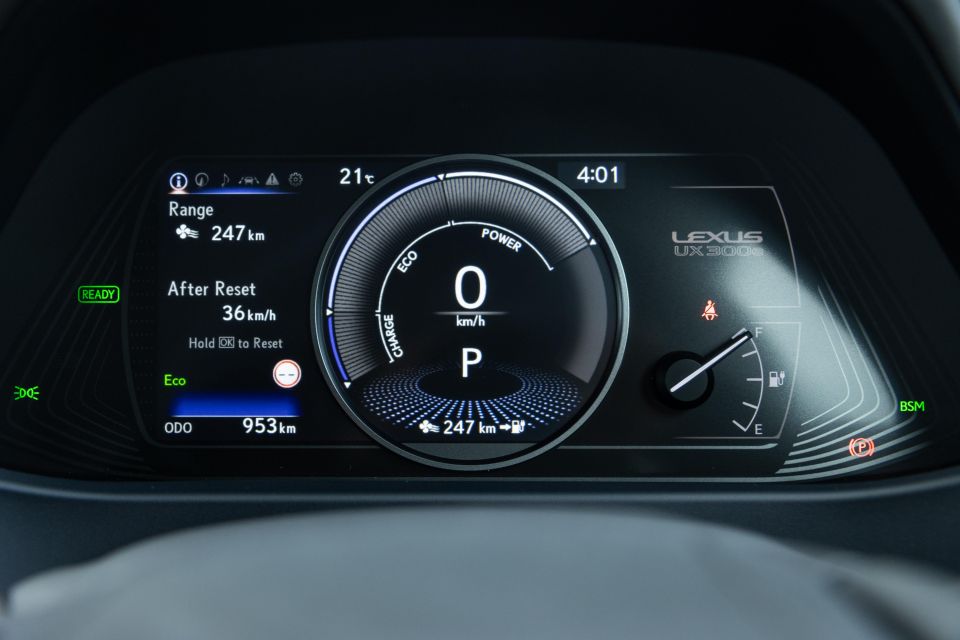
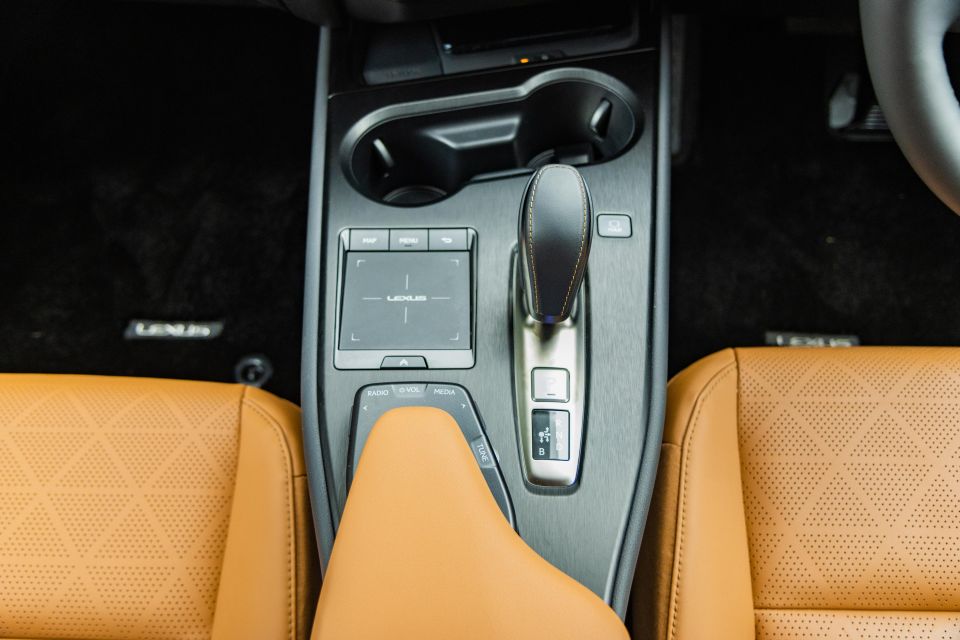
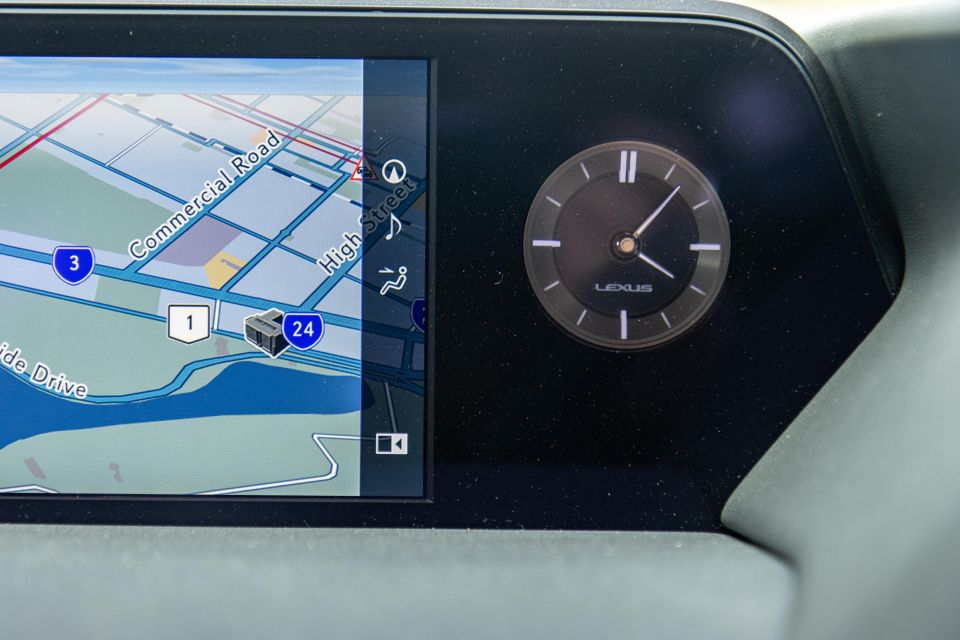
The Lexus’ cabin also wraps around you like a proper cockpit, which makes it feel a little more pokey but at the same time it feels sportier and more driver focused.
Our Sports Luxury tester was specified in Khaki Metal green exterior over Ochre tan interior, which is a nod to the #GreenOverTan crowd and a visual highlight compared to some of the more boring black and grey interiors offered by rivals.
Tactility in terms of the switchgear and controls is typically Lexus nice, though some of the ergonomic quirks, as we tend to note with Lexus products, remain a sore point.
Most of this centres around the infotainment. Lexus’ infotainment interface has long been behind the pack in terms of usability, more than its actual feature set.


Embedded navigation, DAB radio and wired Apple CarPlay/Android Auto all feature as standard on the 10.3-inch widescreen display (with no touch functionality), though the look and feel of the software leaves a lot to be desired.
The navigation runs Toyota mapping, which is ‘fine’ but not super high-end, the loading times are a little bit slow, and that bloody touchpad controller is just too fiddly. You’ll aim for one icon and end up a couple over, which is frustrating when a rotary controller or touchscreen could easily fix it.
Storage is decent without being spectacular, with shallow bottle holders in the doors, a decent cubby under the front-centre armrest (and it’s double hinged), cupholders ahead of the shifter, and a wireless phone charging pad under the centre stack.
Other features up front include full electric adjustment for both front seats – though oddly no memory – heating and ventilation for the front row, as well as a segment-rare electric steering column. The driver is also faced with a 7.0-inch digital instrument display incorporating a virtual centre dial.
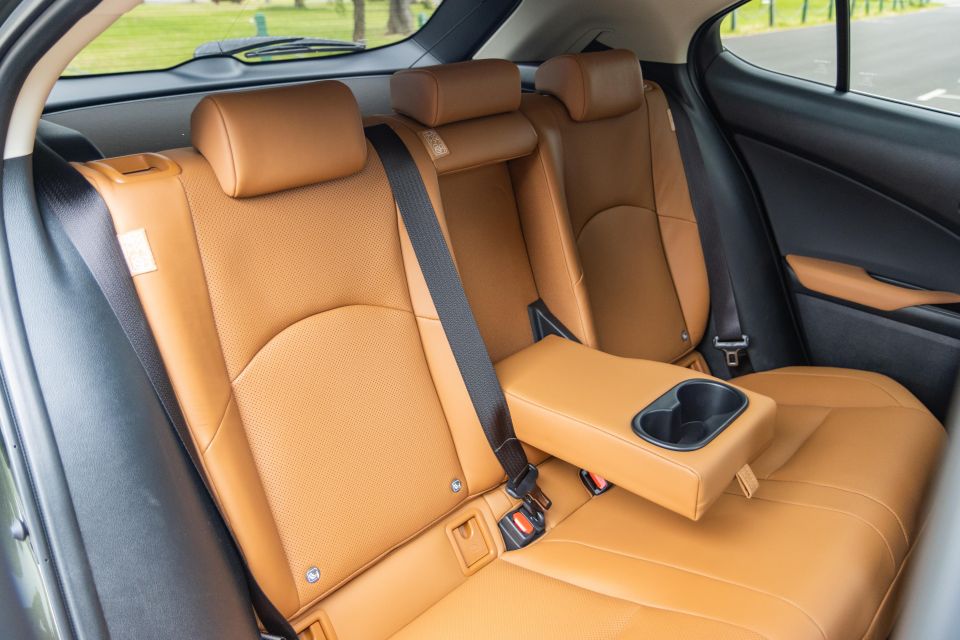
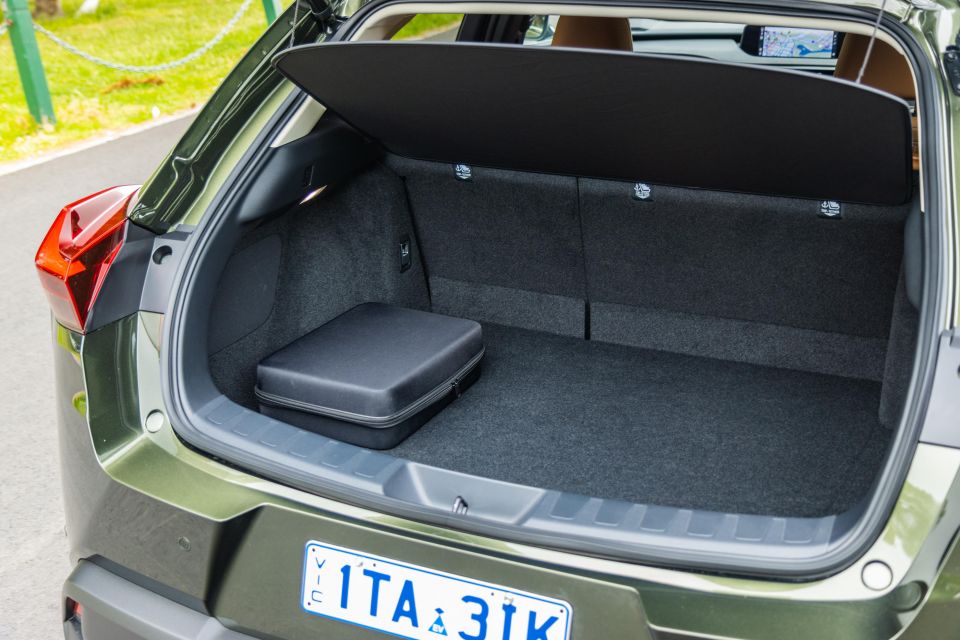
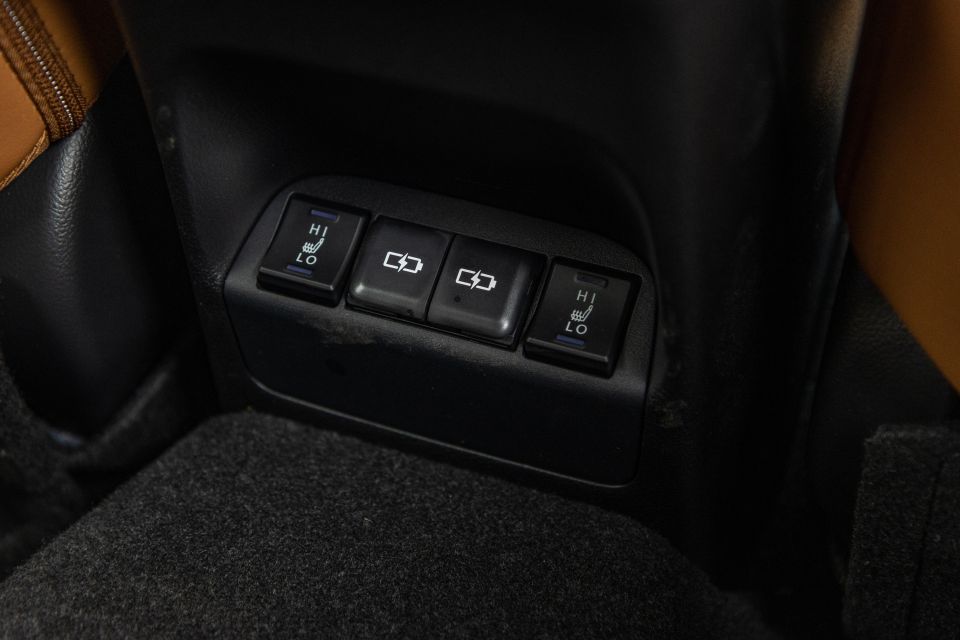
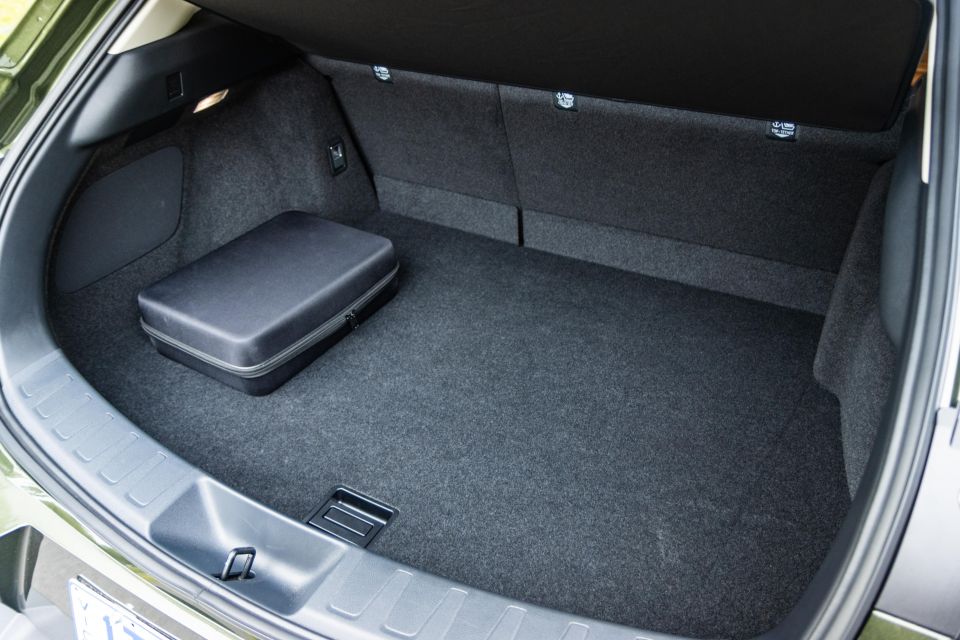
Move into the second row and things aren’t quite as flashy.
Like the standard UX, leg-, head- and toe room aren’t great, especially behind taller front occupants. The floor feels like it’s been raised slightly to accommodate the battery pack too, so there’s even less space than usual.
It’s best left for smaller children or babies in car seats, and feels a little behind the likes of the EQA let alone the rather cavernous XC40 Recharge.
There’s a fold-down centre armrest with cupholders, directional rear air vents, USB charging outlets and a map pocket behind the front passenger seat.
Further back, the boot area measures 414L according to Lexus, which is a decent improvement over the UX200 (321-371L) and UX250h (324-364). Not having hybrid batteries or a spare wheel under the boot floor helps – instead there’s an underfloor compartment with a tyre repair kit.
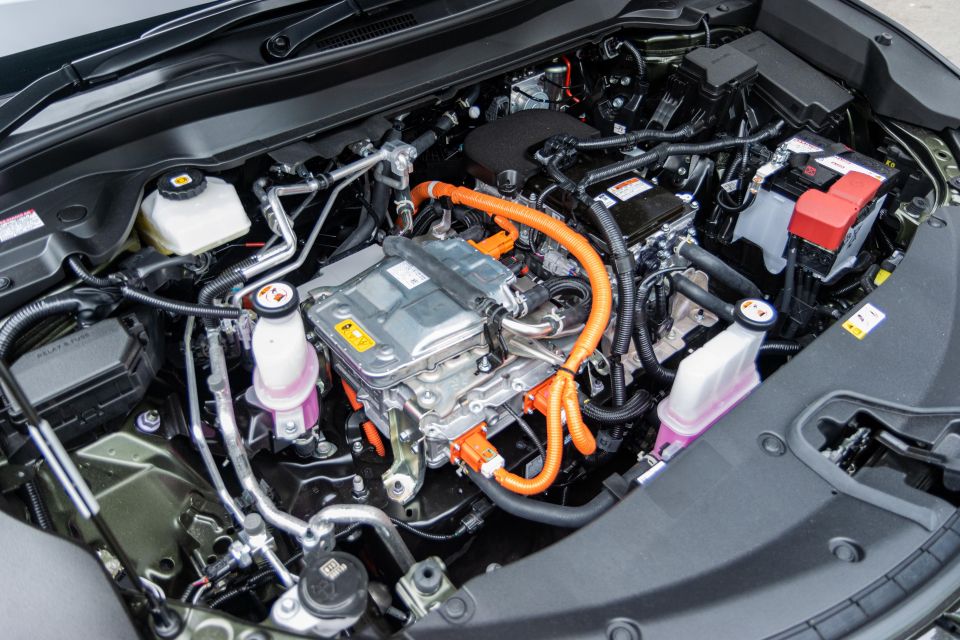
Power in the Lexus UX300e comes from a 150kW/300Nm electric motor mounted on the front axle, good for a 0-100 claim of 7.5 seconds and a top speed of 160km/h.
Range is quoted as 360km on the more lenient NEDC combined cycle, with the floor-mounted lithium-ion battery pack measuring 54.3kWh which Lexus says has been integrated into the chassis to improve torsional rigidity.
That means the UX300e offers a shorter range than all its direct rivals, which claim over 400km of driving range on the stricter WLTP test cycle.
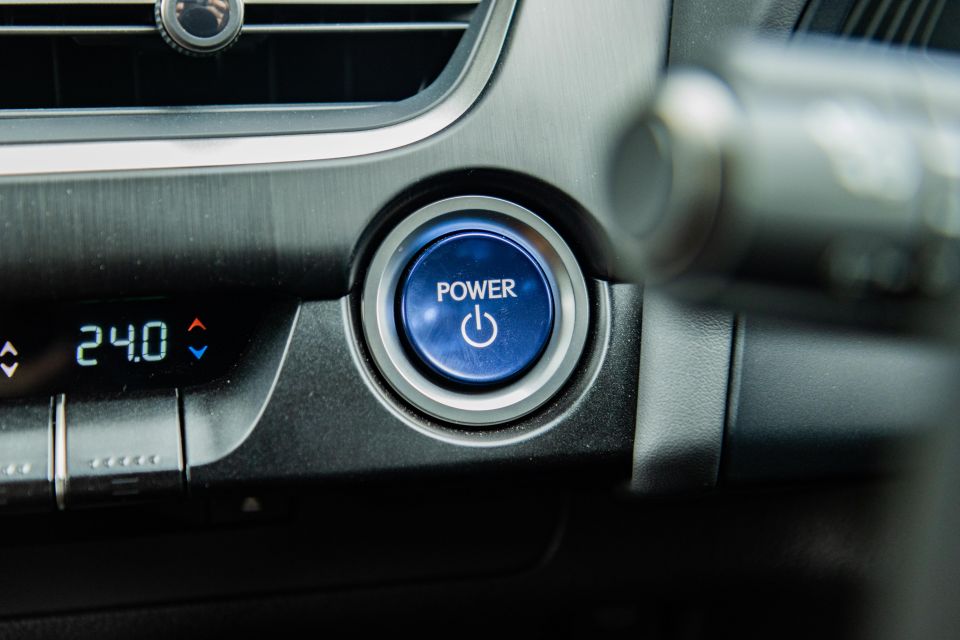
Other modifications compared to petrol and hybrid UX variants include ventilated rear disc brakes, grille shutters, underbody covers, and additional noise insulation materials around the tyres, fenders and electric motor.
The UX300e also uses a bespoke suspension tune, including a multi-link independent rear suspension with greater arm rigidity and optimised bushes. Lexus says it has strengthened the steering gearbox mount and front suspension member.
Finally, Lexus says the electric motor up front weighs half that of the petrol engines in UX200 and UX250h models for improved turn-in response, while the addition of the battery pack in the floor has improved the centre of gravity to a figure “comparable to a coupe”.
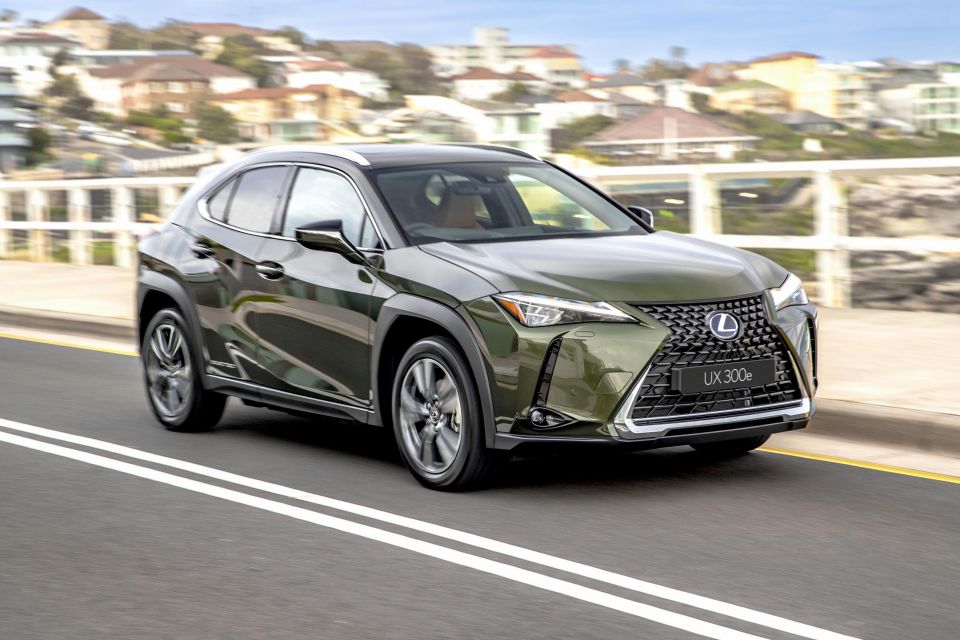
If the thought of driving an electric vehicle feels a bit foreign to you, the UX300e may make you feel a little more at home.
It’s a hard feeling to explain, but the electric Lexus behaves a lot like a hybrid but instead of the petrol engine kicking in the e-motor just continues to offer drive – effortlessly and quietly, too.
Pedal feel, steering feel, even the sounds (or lack of) coming from the powertrain all feel like a normal UX. It’s pleasantly familiar, though EV die-hards may feel a little let down.
Speaking of pedal feel, though, the brakes can be a little inconsistent in feel and feedback, at times grabbing too much or not grabbing enough. We found this happened most when slowly coming to a stop in traffic.
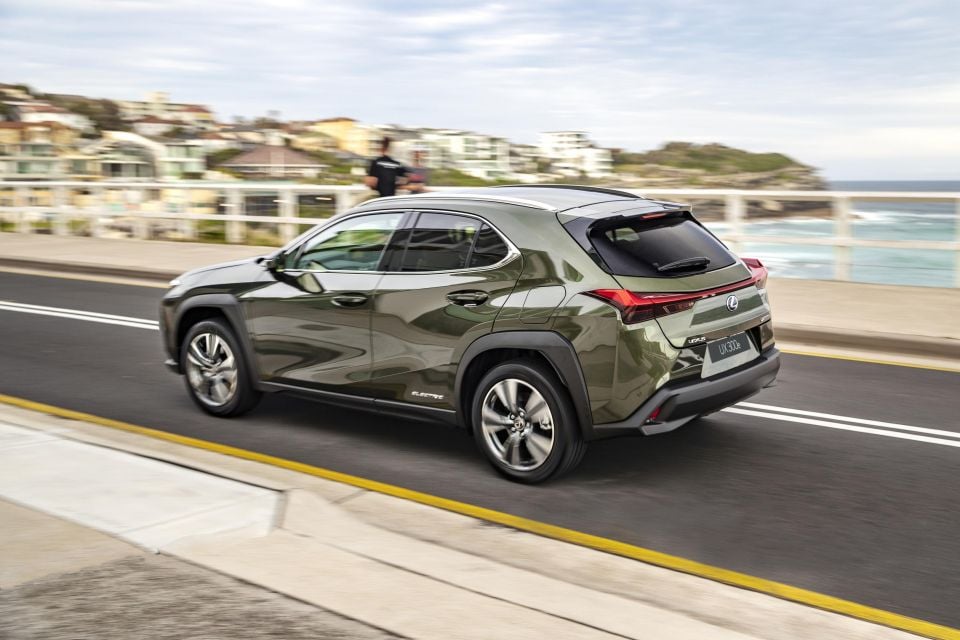
Where expert car reviews meet expert car buying – CarExpert gives you trusted advice, personalised service and real savings on your next new car.
In an effort to make the UX300e a bridge between hybrid and full electrification, the UX300e lacks the range, charging capability and elements like one-pedal driving that make EV ownership so unique.
While the NEDC claim is up to 360km you’ll usually see between 250-300km indicated to empty when you start up after a full charge, and the regenerative braking settings are basically the same as a UX Hybrid.
Then there’s the charging. AC is through a conventional Type 2 plug, but fast-charging is via an older CHAdeMO plug that only offers up to 50kW of capacity – though it’s free to use on the Chargefox public charger network.
I used a public charger in Brunswick, and saw 16.12kWh replenished in 33 minutes. That saw the battery charge go from around 61 per cent to 90 per cent in that time. Lexus also claims a full charge using DC input will take around 80 minutes.

Beyond some of the shortcomings of the EV systems, the drivetrain itself and driving experience is actually quite nice.
Power delivery is buttery smooth and beautifully quiet, something Lexus really prides itself on, and the ride and handling feels nicely balanced for what is an urban-focused crossover. It’s the quickest and most powerful UX variant and certainly feels that way without being anywhere near Tesla-fast.
As with other TNGA-based Toyota and Lexus vehicles, the steering feel is light but really fluid and direct, meaning you can turn the UX in with accuracy and confidence, and driving it in tight streets in the city is both relaxing and a bit of fun.
Its compact dimensions really shrink around you, so it feels perfect for navigating skinny alleyways and city streets, and the suspension strikes a nice balance between comfort and athleticism to iron out things like tram tracks nicely while also maintaining a level of dynamic finesse.
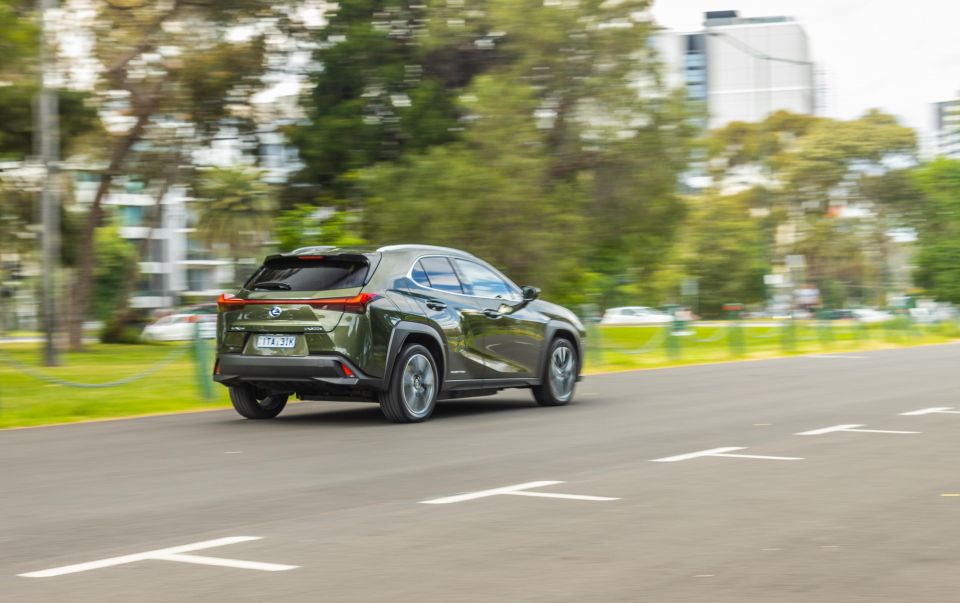
On-road refinement is also good. Where the UX200 and UX250h can fall victim to tyre roar on rougher surfaces, the UX300e feels more insulated from the outside world, though it’s not quite as whisper quiet as the EQA 250. The added insulation measures are definitely noticed.
As the speed increases the UX settles happily into a comfortable cruise, calmy floating along at 100-110km/h. The Lane Trace Assist active centring can be a little inconsistent at times, but you can set and forget the adaptive cruise system and let it do the hard work for you on the highway.
The UX’s angular and rakish design makes blind-spot monitoring and rear cross-traffic alert very helpful when merging lanes and reversing out of tight spots with poor visibility, and the surround-view camera helps you place the UX into spots or tight lanes nicely – though the camera resolution isn’t the best we’ve seen.
I said it earlier, it’s pleasingly familiar to drive – and for many buyers that will be enough of an incentive in itself.
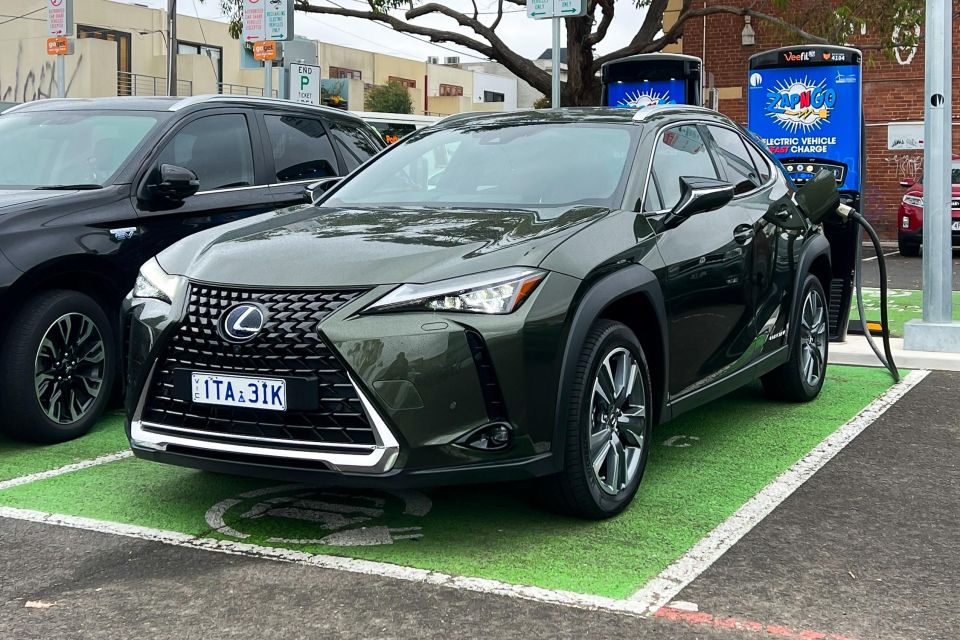
Lexus’s local division is launching a new ownership program for its first EV: a five-year, unlimited-kilometre warranty with a 10-year, unlimited-kilometre battery guarantee.
The five-year vehicle warranty is 12 months longer than previous coverage for the wider Lexus range (though all models will move to five-year coverage from 1 January 2022), while the battery warranty is valid provided the vehicle gets an EV health check each year after the fifth year of ownership according to the brand’s schedule – much like the program for Toyota and Lexus hybrid batteries.
Further, the battery is covered for up to 10 years or 160,000km (whichever comes first) if its storage capacity falls below 70 per cent – again subject to the annual health check.
Lexus will offer capped-price servicing of $295 per visit for the first five services, with intervals of 12 months or 15,000km.
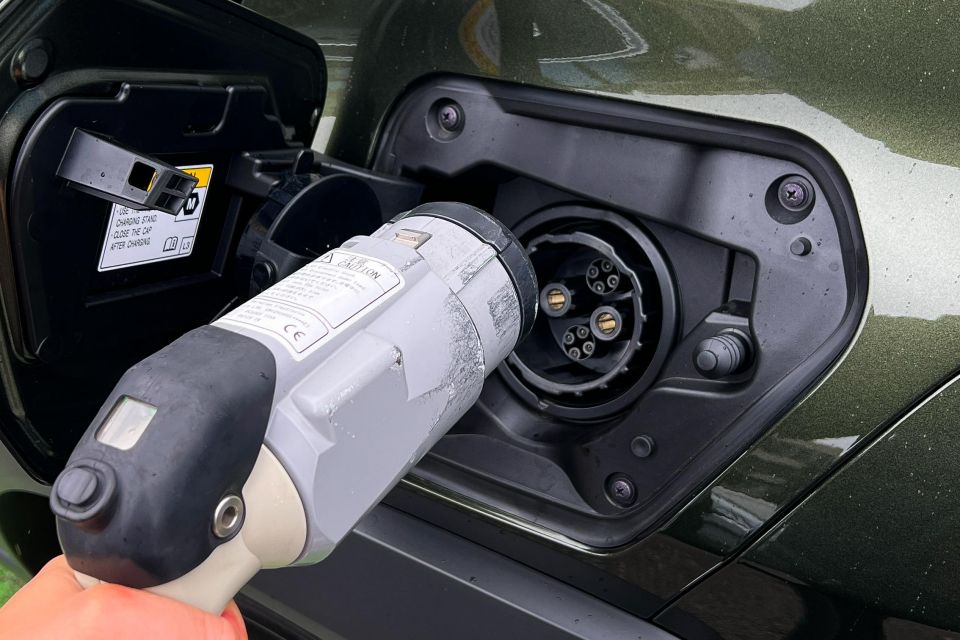
The UX300e will come with a three-year subscription to the flagship Lexus Encore Platinum owner benefits program, which includes Lexus on Demand vehicle loans, and access to valet parking vouchers (up to eight) at participating locations.
Finally, buyers of the UX300e will receive a professionally-installed AC home charger from JetCharge as part of their purchase, capable of fully charging the vehicle’s battery from empty in 6.5 hours.
Three years of complimentary access to ChargeFox’s high-speed DC charge network, which includes over 1400 outlets and 770 charge stations across the country. For reference, the UX300e can charge from empty to 100 per cent in around 80 minutes on a DC fast charger.
It’s worth noting that while AC charging is courtesy of a Type 2 plug, the DC port is an older CHAdeMO-type port with charging speed limited to 50kW. For reference, most rivals can be charged at 100kW or above.
Lexus doesn’t quote an official power consumption figure, though we saw an indicated figure in the high 16s and low 17s (kWh/100km). For reference, a Mercedes-Benz EQA 250 quotes 16.2kWh/100km.
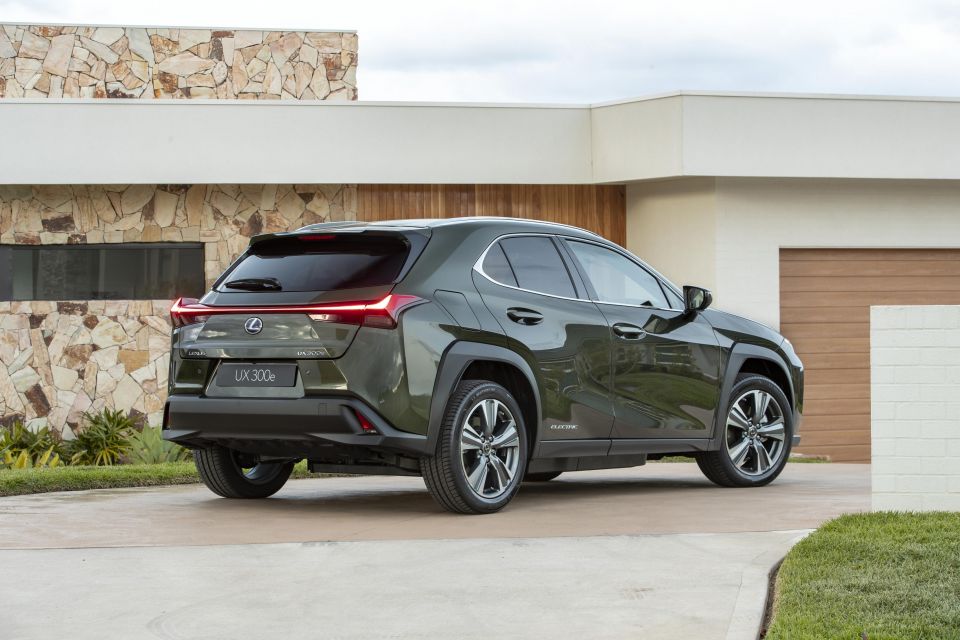
You need to manage your expectations here – Lexus hasn’t moved the EV game forward.
There’s nothing special in the on-paper specifications, the UX in itself is a good but not spectacular premium small SUV, and the price in this Sports Luxury spec is well, um, ambitious.
But what the UX300e does so well is appeal to the demographic I think Lexus is targeting – current Toyota and Lexus hybrid owners, likely of a more distinguished age, that may be a bit wary of going full-EV.
While the UX300e won’t cure your range anxiety, the comprehensive ownership package basically holds your hand through the process of switching your lifestyle – you get a free home charger, and you don’t have to worry about paying for a public charger for at least three years.
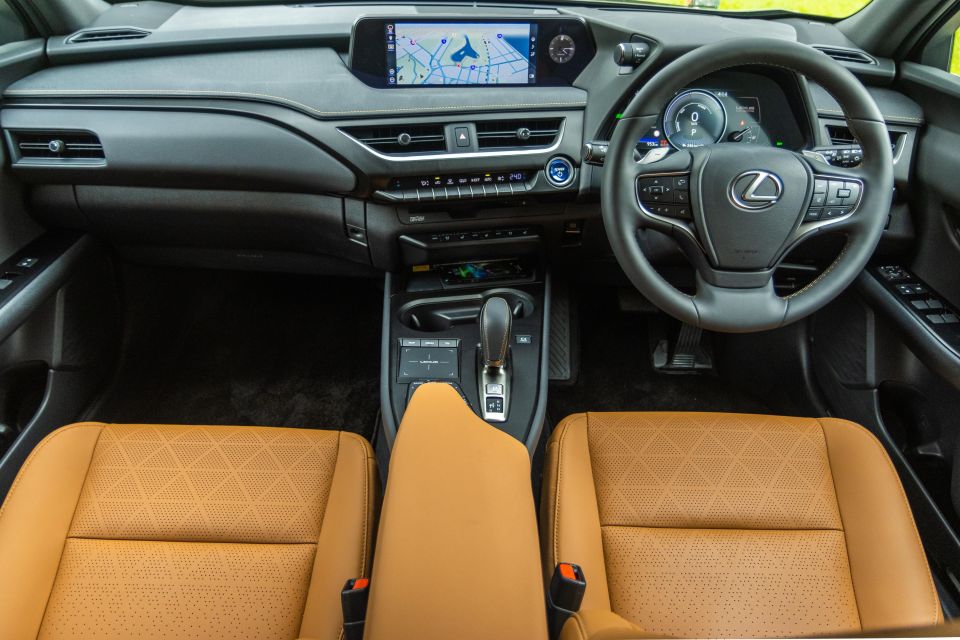
Plus, Lexus and Toyota buyers generally care about reliability and longevity, and you’re covered for up to a decade. Surely that’s some piece of mind, right?
It also drives very much like any other Lexus hybrid, only better, doesn’t stand out as ‘the electric one’ save for a couple of badges, and you get access to that excellent Lexus Encore Platinum program.
A measure of an EV isn’t just about its range per charge or 0-100 time. While important, I think Tesla has really given some people the idea that if it doesn’t offer 500km of range and get you a speeding ticket in around three seconds, it’s useless.
If you want electric vehicles to become mainstream, the bulk of them need to be like this UX. It looks like any other car in the showroom, owning one isn’t a completely foreign process, and it drives like a normal car. That’s the appeal of the UX300e – just give it more range and a 100kW CCS charger Lexus, please.
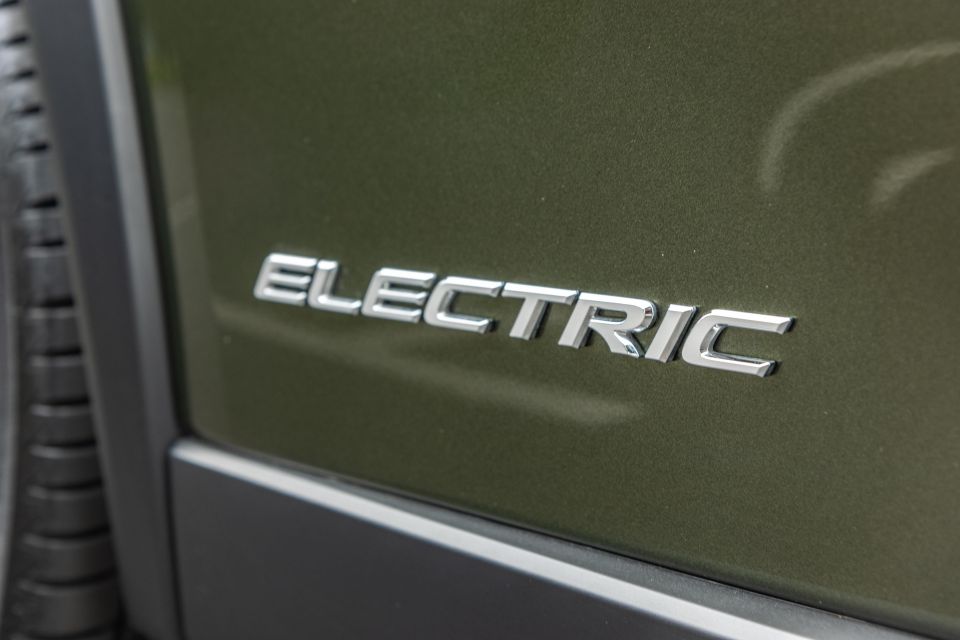
Click the images for the full gallery
MORE: Everything Lexus UX
Where expert car reviews meet expert car buying – CarExpert gives you trusted advice, personalised service and real savings on your next new car.
James Wong is an automotive journalist and former PR consultant, recognised among Australia’s most prolific motoring writers.


William Stopford
6 Hours Ago


Ben Zachariah
7 Hours Ago


Derek Fung
8 Hours Ago


Matt Campbell
14 Hours Ago


William Stopford
1 Day Ago


Josh Nevett
1 Day Ago